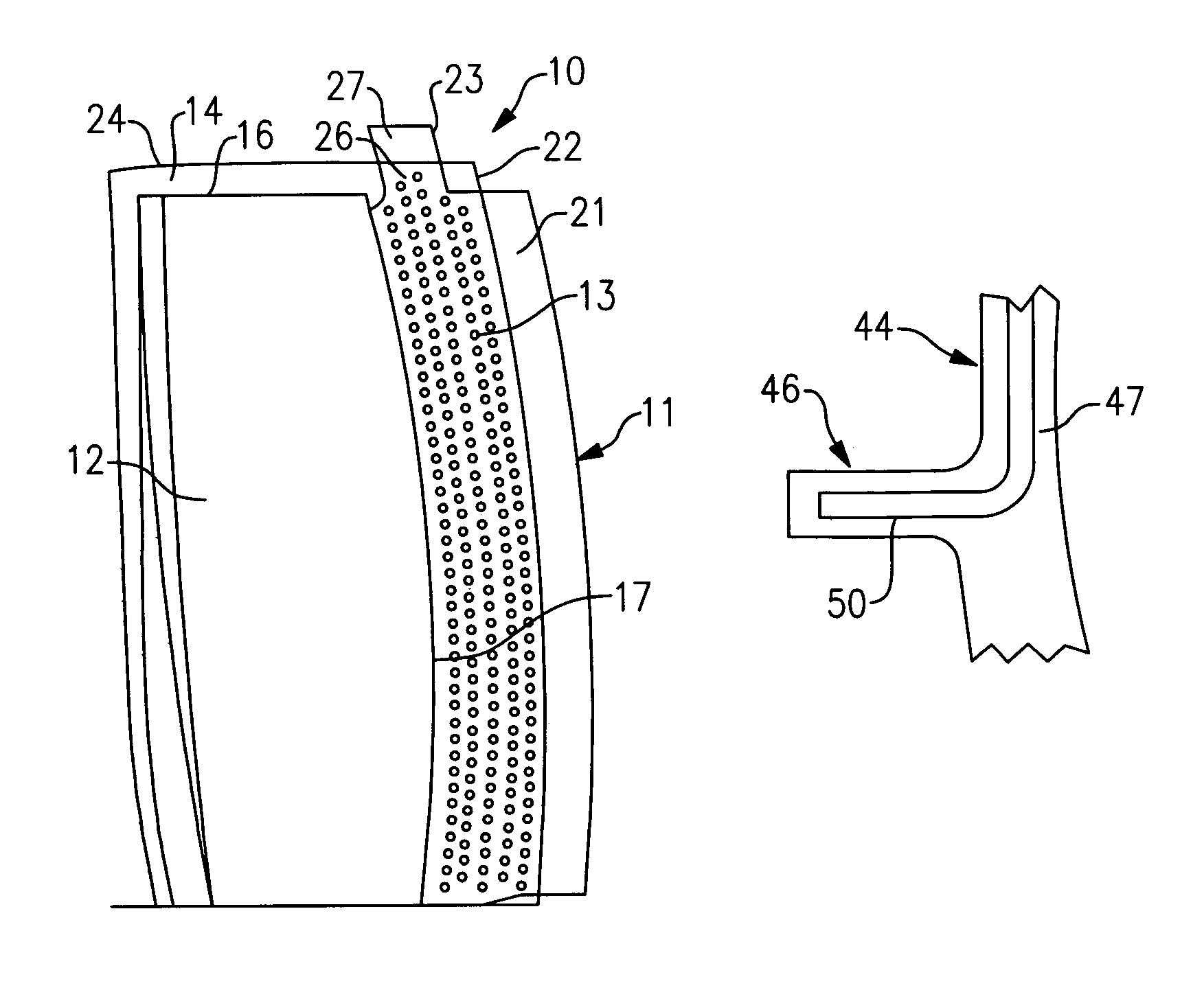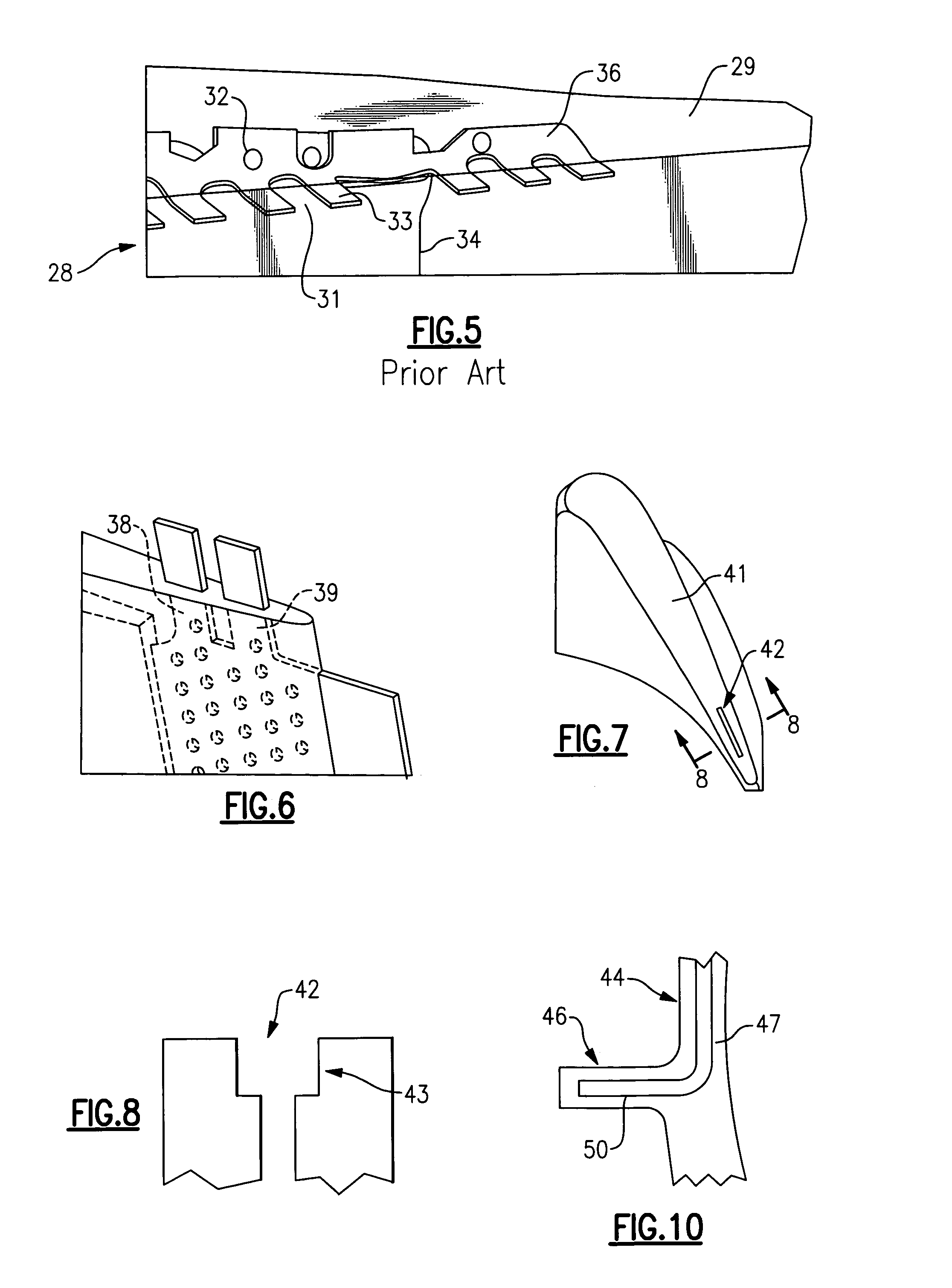Composite core for use in precision investment casting
a core and core technology, applied in the field of composite cores for precision investment casting, can solve the problems of limited mechanical properties of superalloy materials, prone to warpage and fracture of ceramic cores, and fragile ceramic cores, and achieve the effect of reducing the number of refractory metal elements used in the core and reducing the cost of manufacturing
- Summary
- Abstract
- Description
- Claims
- Application Information
AI Technical Summary
Benefits of technology
Problems solved by technology
Method used
Image
Examples
Embodiment Construction
[0030]Referring now to FIG. 1, the invention is shown generally at 10 as applied to a composite core 11 which includes a ceramic element 12 and a refractory metal element 13.
[0031]As is typical for the investment casting process, the core is placed within a metal die whose molds surround the core and the space therebetween is filled with wax. The die is then removed and the composite core 11 is embedded in a wax pattern 14 as is shown in FIG. 1.
[0032]As will be seen in FIGS. 1–4, the composite core element 11 has a tip edge 16 and an adjacent trailing edge 17. A slot 18 is formed in the trailing edge 17 as shown in FIG. 4 so as to receive a front edge 19 of the refractory metal element 13. The refractory metal element leading edge 19 is secured in the slot 18 by any of various methods such as by an adhesive or the like. FIGS. 3 and 4 show the combination of the ceramic element 12 and the refractory metal element 13 prior to the casting process, and FIGS. 1 and 2 show the combination...
PUM
| Property | Measurement | Unit |
|---|---|---|
| refractory | aaaaa | aaaaa |
| temperatures | aaaaa | aaaaa |
| operating temperatures | aaaaa | aaaaa |
Abstract
Description
Claims
Application Information
 Login to View More
Login to View More - R&D
- Intellectual Property
- Life Sciences
- Materials
- Tech Scout
- Unparalleled Data Quality
- Higher Quality Content
- 60% Fewer Hallucinations
Browse by: Latest US Patents, China's latest patents, Technical Efficacy Thesaurus, Application Domain, Technology Topic, Popular Technical Reports.
© 2025 PatSnap. All rights reserved.Legal|Privacy policy|Modern Slavery Act Transparency Statement|Sitemap|About US| Contact US: help@patsnap.com



